10 Reasons to Choose Mardi Himal Trek Over Other Treks in Nepal
If you're planning a Himalayan trek and finding yourself confused with several trekking trails in Nepal, you are not alone. Choosing the right trek can be confusing, especially when you do not have enough time or it is your first trek.
But let me tell you—if you’re searching for a route that gives you the perfect blend of natural beauty, manageable difficulty, cultural richness, and peaceful trails, then you might just fall in love with Mardi Himal. In this blog, we’ll walk you through the top 10 reasons to choose the Mardi Himal Trek over others.
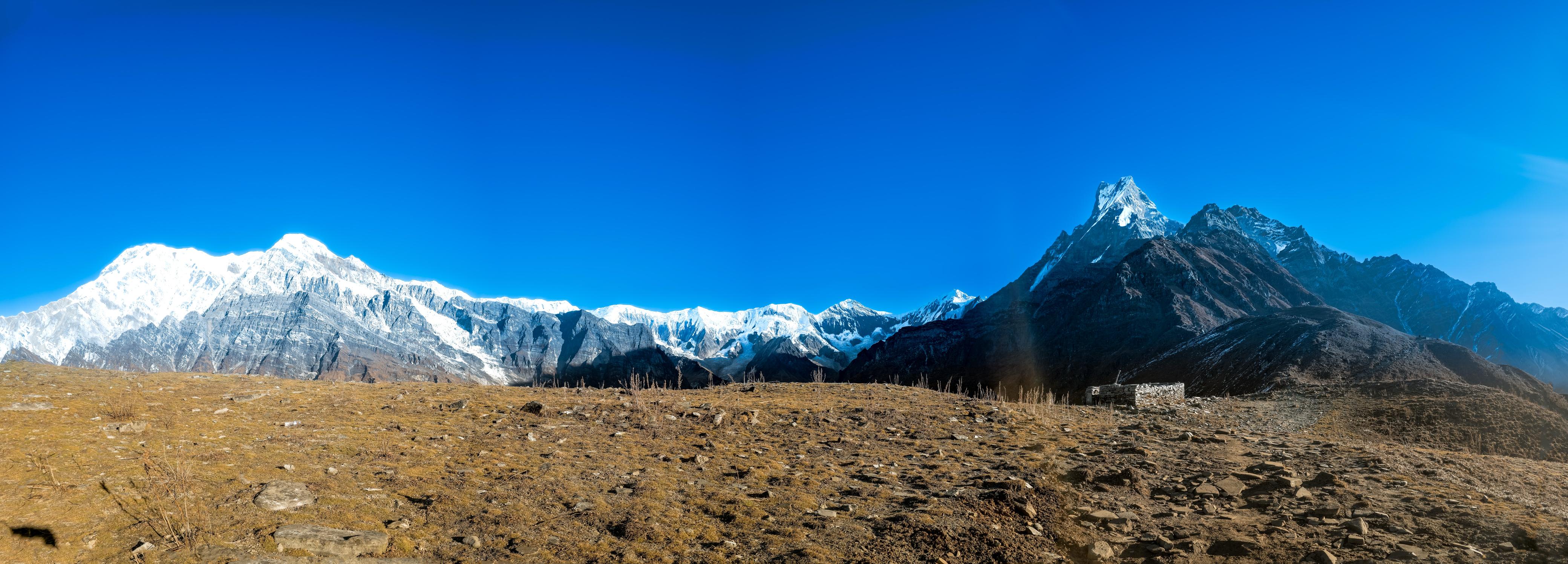
1. Off-the-Beaten-Path, Without Going Remote
Let’s be honest—there’s “off-the-beaten-path” and then there’s “why-am-I-sleeping-in-a-cow-shed” remote. Mardi Himal strikes a sweet balance. It’s still considered a hidden gem in Nepal’s trekking scene, but it’s not so remote that you need expedition-level logistics to make it happen.
You start from Pokhara and within a couple of hours’ drive, you’re on the trail. Yet once you start ascending through the forested ridges, it’s as if you’ve stepped into a secret trail that only a few know about. You won’t be dodging yak trains or shoulder-to-shoulder with dozens of other trekkers. This isolation, without sacrificing safety or access, is something few other treks in Nepal can offer.
2. Unmatched Close-Up Views of Machapuchare
You’ve seen Machapuchare—maybe on postcards or Instagram. But nothing prepares you for how close it feels on the Mardi Himal ridge. The mountain’s jagged silhouette is just unreal—an untouched pyramid of ice. It’s sacred, so no one climbs it, and that somehow makes it feel more powerful.
From High Camp to Mardi Himal Base Camp (4,500m), you're staring straight into its face. In the early morning light, when the first pink glow hits its summit, you get that surreal, "how is this real?" moment. And the best part? No crowds jostling for the same photo.
3. It’s Shorter, But Just as Rewarding
Not everyone has the luxury of two or three weeks to trek. Mardi Himal is doable in as few as 4 days (though 6–7 is ideal if you want to acclimatize properly and enjoy the experience). Despite its shorter duration, the trek offers a full Himalayan experience—lush forests, ridgeline walks, local teahouses, and high-altitude panoramas.
You don’t feel like you’re getting a “mini” trek. You feel like you’re getting a complete one, just without the long haul.
4. Fewer People, More Solitude
Some treks feel like parades. EBC and Annapurna in peak season are often a blur of neon jackets, trekking poles, and queues for toilets. On Mardi Himal, even in high season, you can walk for hours with only the sounds of nature for company.
That solitude matters. It lets you tune into the rhythm of the mountains, your own breathing, and the shifting light. It's not anti-social—it’s restorative. And when you do meet someone on the trail, there's a deeper camaraderie because you're not just two people in a tourist funnel—you’re fellow wanderers.
5. Great Infrastructure, But Not Overdeveloped
There’s this perfect middle ground on Mardi Himal: it has just enough infrastructure to be comfortable without feeling like a hiking theme park. You’ll find small, family-run teahouses offering hearty meals, warm beds, and even the occasional hot shower—but nothing feels commercial or plastic.
Most of the lodges are still run by locals from the region, and they haven’t become over-reliant on mass tourism. That means they’re usually more welcoming, the food tastes more homemade, and the vibe is less transactional.
6. A Real Sense of Discovery
Mardi Himal officially opened to trekkers in the early 2010s. That’s recent by Nepal trekking standards. There’s still a sense of pioneering when you walk it. The trails feel fresh, the signage isn’t overdone, and you often find yourself guided more by instinct and advice from fellow trekkers than by route maps.
Unlike the more well-trodden routes, where every turn feels documented, Mardi still surprises you—one moment you’re in dense forest, and the next, you're on a ridge with 360° views of the Annapurna range.
7. The Forest Sections Are Incredible
Don’t underestimate the first few days of the trek. Before you hit the high alpine views, you walk through forests that are straight out of a fairytale—massive rhododendrons, moss-covered trees, fern-laced undergrowth, and birdsong echoing through the mist.
If you trek during spring (March to May), the forest explodes in color. Rhododendrons bloom in every shade—deep red, pale pink, creamy white. It’s not just a warm-up to the mountains—it’s a visual and sensory experience all on its own.
8. It’s Budget-Friendly
Mardi Himal is lighter on both time and money. You don't need expensive domestic flights (like for EBC) or a long permit list. The basic permits (TIMS and ACAP) are straightforward, and food and lodging remain affordable compared to the more popular trails where prices have skyrocketed.
You can realistically do the trek comfortably on $25–$35 USD per day, depending on your pace and eating habits. If you’re traveling on a budget but want a big mountain experience, this is your trek. Dolpo Caraven Treks and Expeditions is offering a 7-day tour package for just USD 550. So hurry up and contact us to book yours now.
9. Easy Access from Pokhara
One of the biggest headaches with some treks is just getting to the trailhead. With Mardi Himal, you fly or bus into Pokhara, then it’s a jeep ride to Kande or Phedi. No sketchy high-altitude airstrips. No 15-hour bus rides on dusty cliffs.
That ease of access means you can be trekking the same day you arrive in Pokhara—and more importantly, if plans change (weather, health, etc.), it's easy to adapt without being stranded.
10. It’s a Trek That Feels Personal
There’s something very human about the Mardi Himal Trek. The people you meet—the lodge owners, the kids playing in the villages, the yak herders—they’re not jaded by tourism. They still make eye contact. They still ask your name. You’re not just another face in a lineup of 200 trekkers that week.
This trek gives you space to reflect, to engage, and to be present. That’s rare. It’s the kind of journey that stays with you—not just as a physical challenge, but as something that made you feel more alive.
What Makes Mardi Himal Trek an 'Easy Himalayan Trek' for Beginners?
The Mardi Himal Trek's beginner-friendly nature is one of the best reasons for choosing it. While most treks in Nepal, such as Everest Base Camp or the Annapurna Circuit, require serious preparation and endurance, Mardi Himal offers a gentler experience.
The trails are well-marked and maintained, and you won’t be climbing to dangerously high altitudes too fast, which greatly reduces the risk of altitude sickness. This trek typically ranges from 5 to 7 days, making it ideal for those who are short on time but still want to experience the Himalayas.
And the best part is you get all the dramatic mountain views without exhausting yourself. If you’ve always dreamed of trekking in Nepal but felt intimidated, Mardi Himal is your gateway to the world of easy Himalayan treks.
How Does Mardi Himal Offer Breathtaking Views Without the Crowds?
Unlike Everest or Annapurna Base Camp, the Mardi Himal trail isn’t packed with tourists. That’s another huge reason to choose the Mardi Himal Trek—it’s peaceful.
Imagine this: you're standing at a viewpoint with Machapuchare (Fishtail), Annapurna South, and Hiunchuli spread out in front of you, and there’s no crowd competing for photos. This solitude allows for a much deeper connection with nature.
You can actually hear the birds chirping, feel the wind passing by the leaves of the rhododendron, and breathe in the fresh mountain air without distractions. It’s this serenity that makes Mardi Himal a favorite among those seeking a quiet yet awe-inspiring experience.
Why Is Mardi Himal Trek Ideal for Short-Time Travelers?
Not everyone has three weeks to spare for trekking. That’s why another one of the key reasons to choose Mardi Himal Trek is its short duration. You can complete the entire trek in less than a week, starting and ending in Pokhara, which is easily accessible.
The trail doesn't compromise on views or adventure, even though it's shorter. Within just a few days, you climb from lush forests to alpine landscapes, with the Himalayas getting closer with every step. It’s efficient, it’s beautiful, and it fits right into a packed travel itinerary.
What Unique Cultural Experiences Await on the Mardi Himal Trail?
Nepal is not just about mountains—its rich culture is equally fascinating. On the Mardi Himal route, you’ll pass through traditional Gurung and Magar villages, where people live simple, joyful lives rooted in nature and tradition.
This is one of the more underrated reasons to choose Mardi Himal Trek. You'll have the chance to stay in local teahouses, share stories over a cup of homemade tea, and maybe even join a village celebration if you’re lucky. These cultural exchanges add depth to your journey, making it more than just a hike.
How Does Biodiversity Enhance the Mardi Himal Trek Experience?
You don’t need to be a botanist to appreciate the stunning biodiversity along this trail. From dense rhododendron forests to moss-covered trees and colorful wildflowers, the journey is visually engaging due to the changeable greenery.
Bird lovers will especially enjoy the chorus of Himalayan species shifting through the trees. Sometimes you might even spot a Himalayan Monal—the national bird of Nepal. These natural elements are another big reason to choose the Mardi Himal Trek over other routes, where the landscape may not vary as dramatically.
What Makes the Sunrise and Sunset Views on Mardi Himal Trek Special?
Sunrises and sunsets in the Himalayas are magical, and Mardi Himal offers front-row seats to this daily spectacle. Imagine sipping hot tea as the first golden rays light up the snowy peaks—it’s pure bliss.
The High Camp and Viewpoint are the best spots for this, and because the trail isn’t crowded, you’ll often have these moments to yourself. This emotional connection to nature is a powerful reason to choose Mardi Himal Trek if you’re seeking more than just physical adventure.
Is Mardi Himal Trek a Budget-Friendly Option Compared to Other Treks?
Yes, absolutely! One of the most practical reasons to choose Mardi Himal Trek is that it’s easy on the wallet. Compared to other treks, this trek requires fewer permits and less expensive equipment.
Accommodation and food along the trail are affordable, and you can easily do it without a guide if you’re confident, further cutting costs. This budget-friendly nature makes it accessible for students, solo travelers, and anyone trying to explore Nepal without going over budget.
How Safe and Accessible Is the Mardi Himal Trek Route?
The most important thing is safety, particularly if you've never gone trekking before. The good news is that Mardi Himal is considered one of the safer and more accessible treks in Nepal. The altitude gain is gradual, the paths are clear, and villages are never too far apart.
In terms of accessibility, starting the trek is super easy. You can get to Pokhara by flight or bus, and from there, the trailhead at Kande is just a short drive away. If you're looking for a trek that doesn't require weeks of planning or extreme fitness, this is it.
Note: If you are concerned about where to buy Trekking gear in nepal, worry not read our blog here.
What Are the Accommodation and Food Options Like on the Trail?
You don’t have to rough it out too much on Mardi Himal. There are charming teahouses located along the trail, offering cozy rooms, hearty Dal Bhat, and warm hospitality. It’s basic but comfortable, and the views from your window are usually worth more than any luxury hotel.
Another good reason to choose Mardi Himal Trek is the sense of community in these teahouses. You meet fellow trekkers, share stories, and often build friendships over shared meals and chilly evenings around the fire.
Why Is Mardi Himal Trek Gaining Popularity Among Seasoned Trekkers?
Even experienced trekkers are now turning to Mardi Himal for a change of pace. They’ve done the famous trails, and now they want something quieter, more soulful. That’s where Mardi Himal shines.
Natural scenery, multicultural flair, and a dash of energetic enthusiasm are all in exquisite balance here. With the word out, increasing numbers of hikers are discovering its appeal, and thus now might be the most strategic time to go see it before it catches on big.
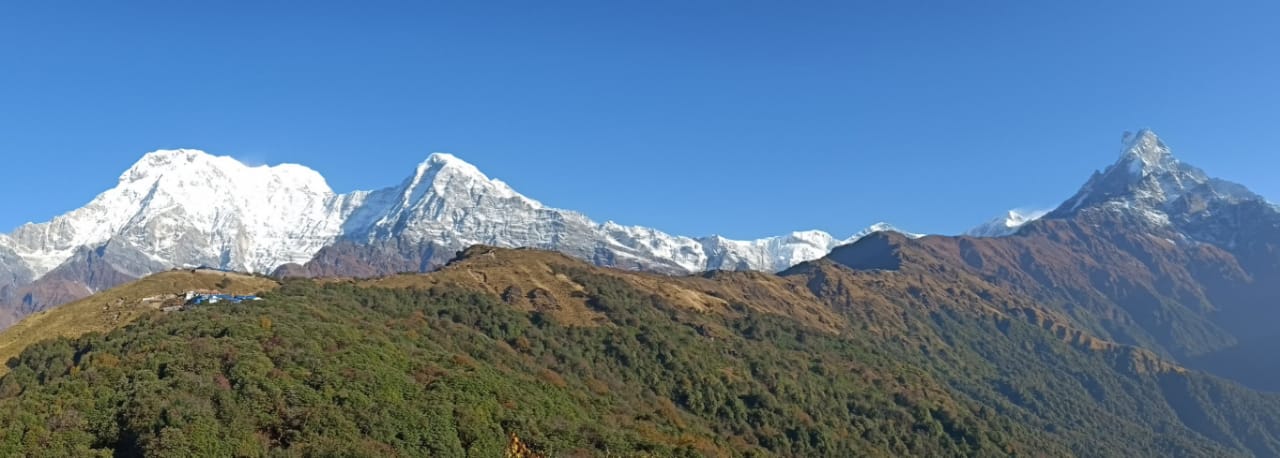
A Quick Note on Seasons For This Trek:
If you're planning Mardi Himal, the season you choose will shape your experience:
- Spring (March to May): Rhododendron forests are in full bloom, weather is stable, and skies are usually clear. It’s the sweet spot if you want greenery and mountain views.
- Autumn (late September to November): Post-monsoon skies are crystal-clear, making for the best views. Trails are a bit busier but still peaceful compared to EBC or Annapurna.
- Winter (December to February): Cold, yes—but stunning. Snow blankets the higher sections. Fewer trekkers, but some teahouses may be closed. Great if you’re prepared and want solitude.
- Monsoon (June to early September): Lush and green but slippery and leech-filled. Clouds can obscure mountain views. Best avoided unless you’re very experienced.
For detailed information, read our blog "Best Time to Trek Mardi Himal: A Complete Seasonal Guide"
Final Thoughts
So there you have it—10 compelling reasons to choose Mardi Himal Trek over any other route in Nepal. Those who are looking for peace, authenticity, an economical vacation, or if you are first-time hikers, then this trek is for you.
High peaks form only one part of the Himalayan beauty which exists through meaningful travel experiences. Mardi Himal presents an exclusive trekking experience that will give you memories you will never forget. Those who feel drawn toward mountain settings should overlook scheduling delays or financial constraints and make their way to Mardi Himal. Packing merely your travel bag leads directly to Mardi. You won’t regret it.
FAQs
Why is Mardi Himal Trek considered one of the easy Himalayan treks?
Mardi Himal Trek has a gradual altitude gain, well-marked trails, and a manageable trekking duration, making it ideal even for beginners.
How long does it take to complete the Mardi Himal Trek?
Generally, Mardi Himal Trek can be completed in 5 to 7 days it depends on you speed and chosen route.
What are the main reasons to choose Mardi Himal Trek over Annapurna Base Camp?
Mardi Himal Trek is shorter, less crowded, offers equally stunning views, and provides a more peaceful and intimate experience compared to ABC Trek.
What is the best time to trek Mardi Himal?
The best time for Mardi Himal Trek is during the spring (March to May) and autumn (September to November) seasons for clear skies and vibrant landscapes.
Is Mardi Himal Trek suitable for solo travelers?
Yes, Mardi Himal Trek is safe and manageable for solo trekkers, with plenty of teahouses and helpful locals along the route.
What are the required permits for the Mardi Himal Trek?
You will need the Annapurna Conservation Area Permit (ACAP) and the TIMS (Trekkers' Information Management System) card for the Mardi Himal Trek.
What makes the views from Mardi Himal Trek special?
The trek offers breathtaking close-up views of Machapuchare (Fishtail), Annapurna South, and Hiunchuli, often without the usual crowds found on other trails.

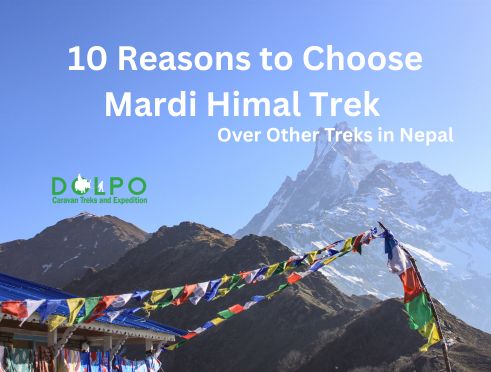
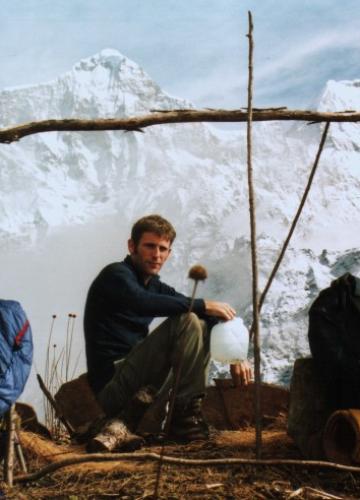
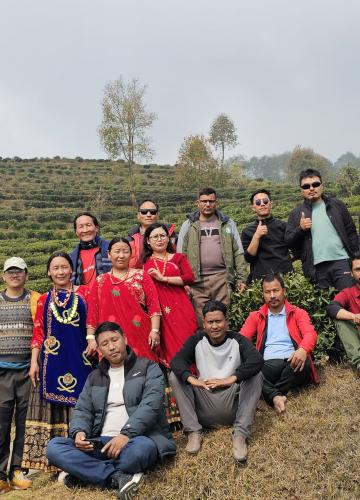
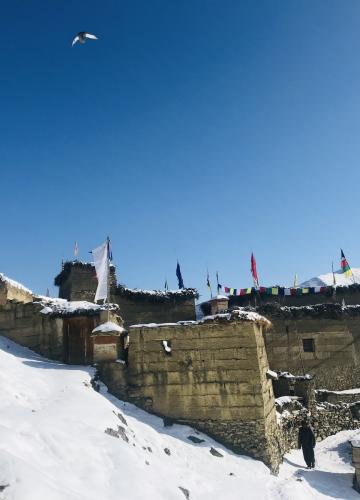
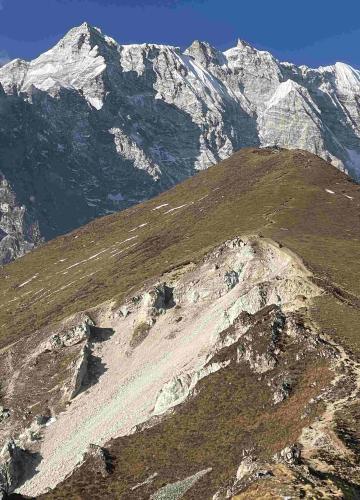
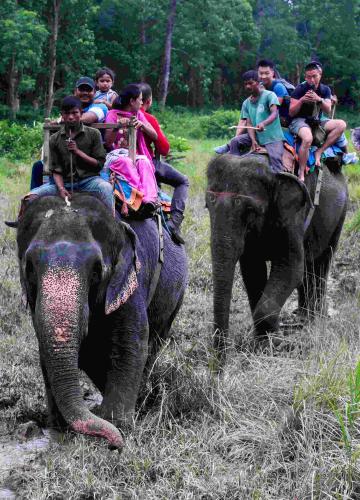
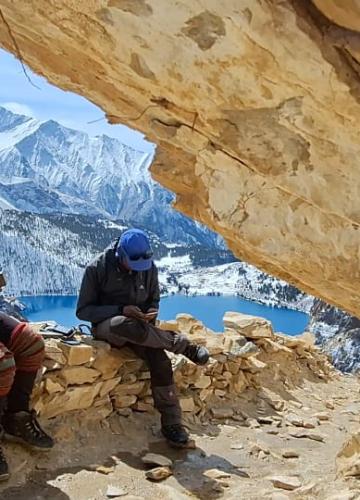

Leave Your Comment